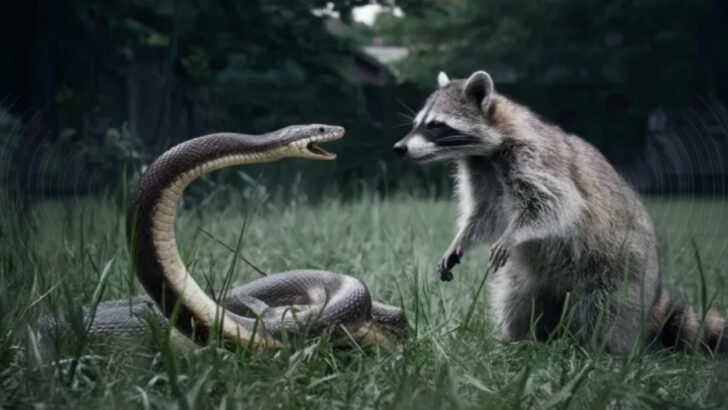Raccoons may look like mischievous little bandits, but they’re not always the ones pulling the heist.
In the wild, they’re not just clever scavengers—they’re also prey. Soft fur, slow sprints, and nighttime wanderings make them a tempting snack for a whole lineup of stealthy hunters.
We’re talking sharp claws, ambush attacks, sky dives, and slithering strikes.
From the shadows of forests to the edges of swamps, there are creatures out there that see raccoons as dinner, not drama.
So who’s fast enough, sly enough, and savage enough to take one down?
Let’s meet the 14 natural predators that don’t flinch when a raccoon comes strolling by.
Great Horned Owl
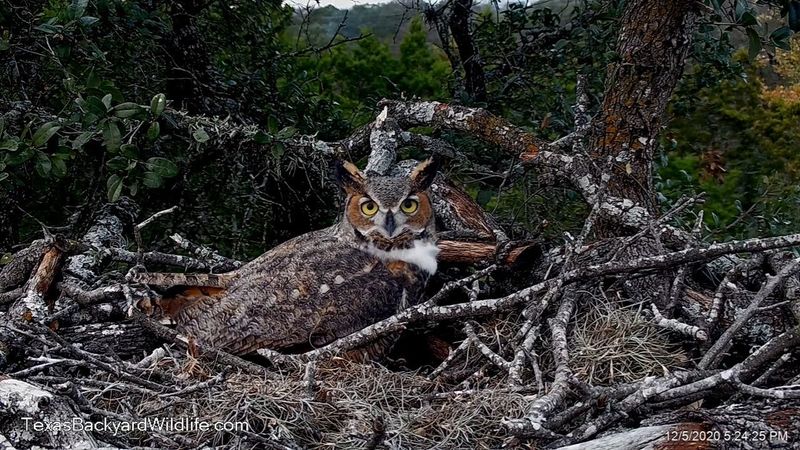
With an air of silent majesty, the great horned owl glides through the night skies. Its enormous wingspan and acute hearing make it a formidable hunter of raccoons. These owls, with their tufted ‘horns,’ strike from above with deadly precision. In the cloak of darkness, raccoons become vulnerable to this silent predator, especially the young and unwary. Their night vision allows them to spot movement from a great distance. With talons like steel traps, they seize their prey swiftly. Did you know? A great horned owl can apply 28 pounds of pressure with its grip.
Coyotes
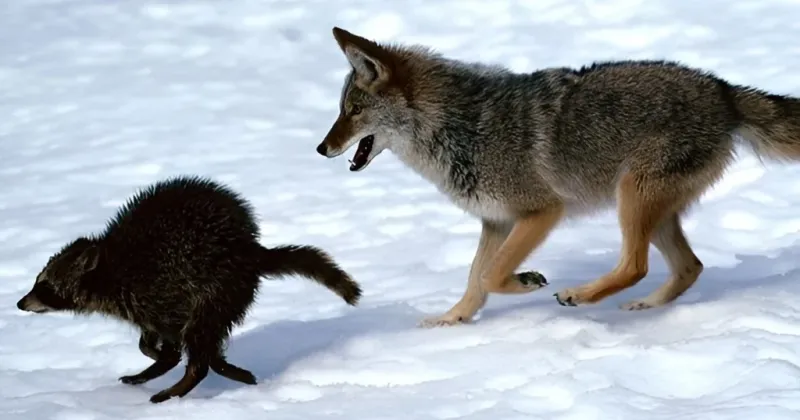
Coyotes, the opportunistic canines of North America, are a common threat to raccoons. These adaptable hunters often patrol the outskirts of forests and urban areas, keenly observing for any signs of raccoon activity. Their cunning nature allows them to ambush unsuspecting raccoons, especially those straying far from cover. With a pack or alone, coyotes rely on their speed and agility to outmaneuver their prey. An interesting fact: Coyotes can run at speeds up to 43 mph, making escape a challenging endeavor for many creatures.
Bobcats

With stealth as their ally, bobcats emerge as one of the deadliest threats to raccoons. These elusive felines have an extraordinary ability to blend into their environment, making them nearly invisible until it’s too late. Their acute senses and patience enable them to stalk raccoons for hours. Bobcats often strike in a sudden burst of speed, leaving little chance for escape. Interestingly, a bobcat’s spotted coat provides perfect camouflage in dappled light, which is essential during their hunts in dense forests.
Red Foxes
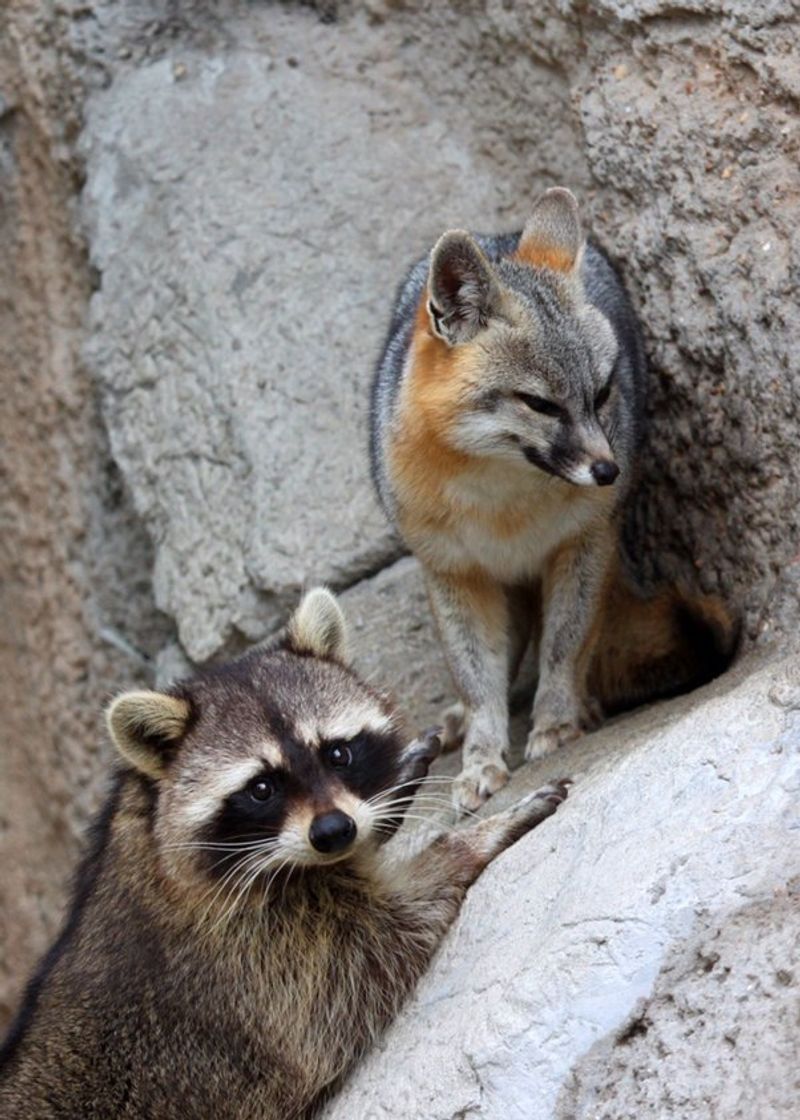
In the world of raccoons, red foxes are cunning adversaries. Their intelligence and agile bodies make them efficient predators, especially in the twilight hours. Red foxes often rely on their acute sense of hearing to detect the faintest rustle of a raccoon moving through underbrush. Once located, they use their speed and stealth to close in. Foxes are quick thinkers, adapting their hunting strategy to the situation. Fun fact: A red fox can hear a mouse squeak from 100 feet away, showcasing their impressive auditory skills.
Mountain Lions
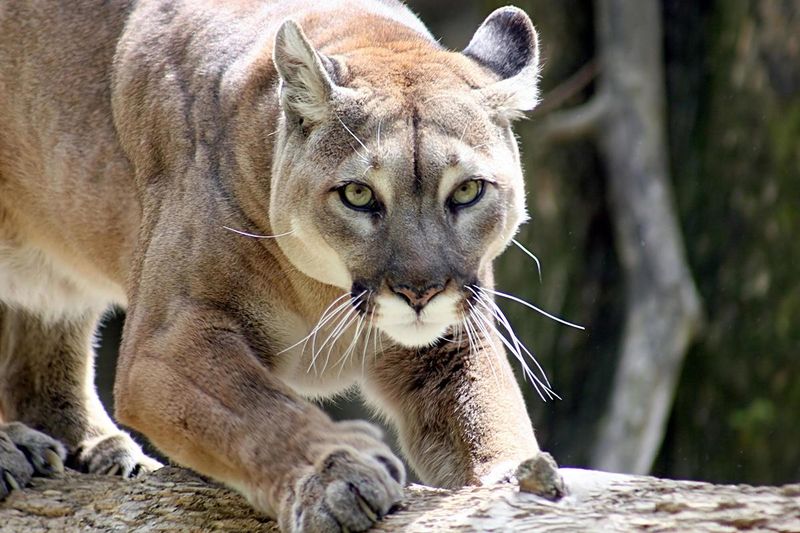
Mountain lions, or cougars, are the apex predators of their range, instilling fear in the hearts of many creatures, including raccoons. Their powerful build and exceptional leaping ability allow them to ambush prey with deadly precision. These big cats are solitary hunters, preferring to stalk their target silently before launching a swift, powerful attack. With muscular limbs and a keen sense of balance, mountain lions traverse their rugged terrain with ease. An interesting tidbit: A mountain lion can leap up to 15 feet vertically, making escape nearly impossible for prey.
Alligators
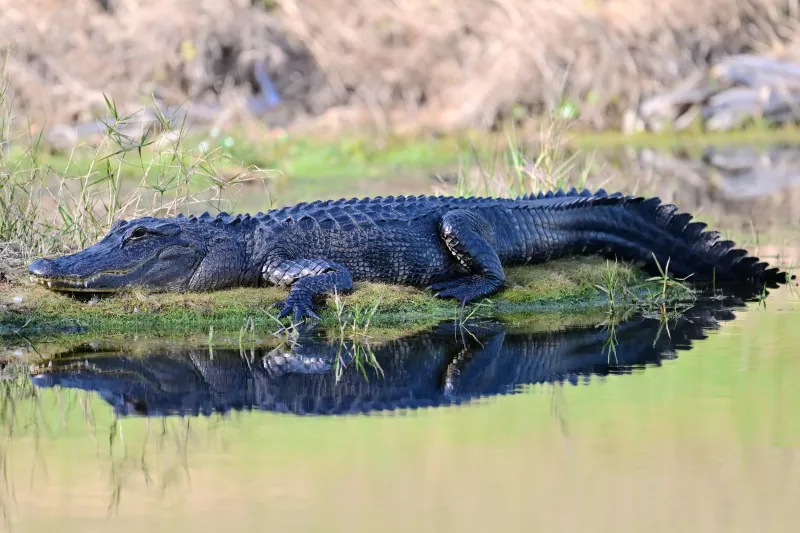
In the murky waters of the South, alligators reign supreme. These formidable reptiles pose a significant threat to raccoons, particularly those venturing near water sources. With stealth and patience, alligators can lie in wait for hours, ready to strike with explosive speed. Raccoons approaching the water’s edge for a drink may not notice the lurking danger until it’s too late. Alligators have a powerful bite force and can drag prey underwater to drown them. Fun fact: An alligator’s bite can exert a force of over 2,000 pounds per square inch.
Wolves
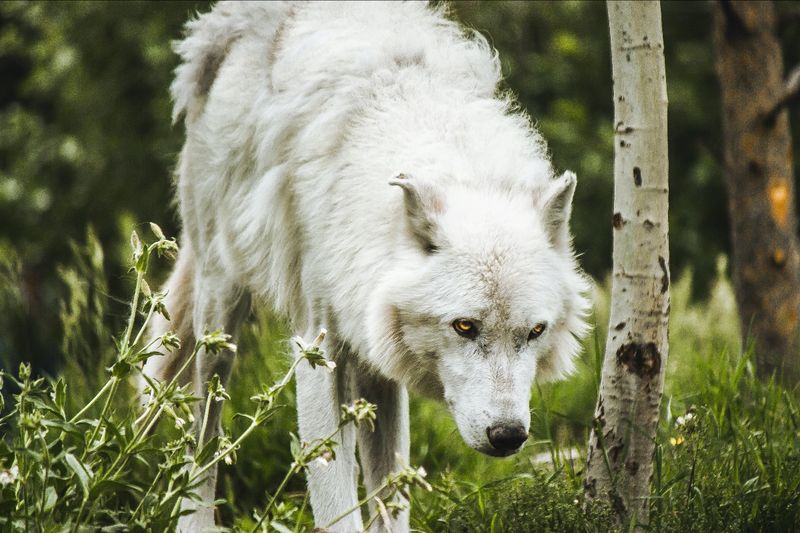
Wolves, the social hunters of the north, often include raccoons in their diverse diet. Their pack mentality allows them to strategize and execute complex hunting maneuvers, cornering raccoons effectively. Wolves rely on teamwork and communication to track and capture their prey. Their endurance and strength make them formidable predators. With a deeply ingrained social structure, wolves teach younger pack members the nuances of hunting. An intriguing fact: Wolves can cover vast distances, often traveling up to 12 miles in a single day in search of food.
Bald Eagles
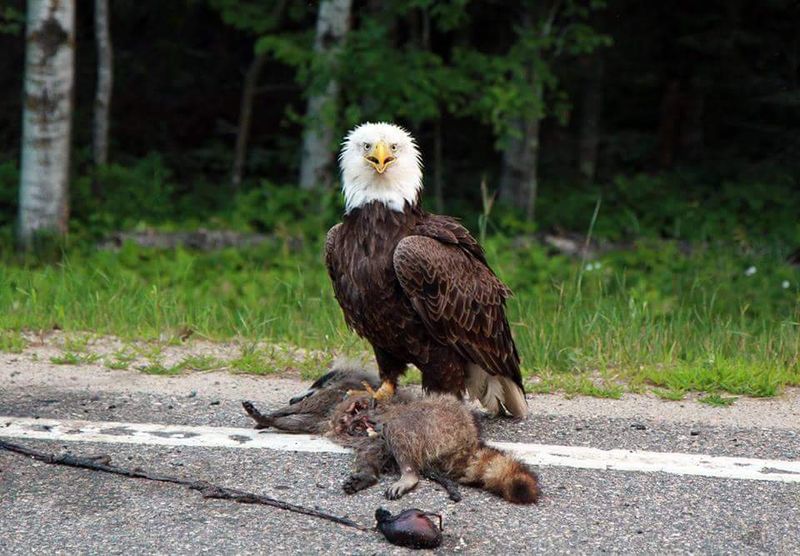
With regal authority, bald eagles rule the skies, posing a unique threat to raccoons, especially juveniles. These birds of prey have exceptional eyesight, allowing them to spot a raccoon from high above. Bald eagles often swoop down swiftly, using their sharp talons to snatch their prey. Their preference for hunting near bodies of water makes raccoons near riverbanks particularly vulnerable. Despite their size, eagles are agile fliers, capable of executing precise aerial maneuvers. Did you know? A bald eagle can spot a rabbit moving almost a mile away.
Snakes

In the world of raccoons, snakes slither as silent predators. While not all snakes pose a significant threat, larger species like pythons or anacondas can overpower raccoons. These snakes rely on stealth to ambush their prey, often hiding in foliage or water. Their method of constricting makes them formidable opponents. Once they strike, escape is nearly impossible. An interesting snippet: Some snakes have heat-sensing pits, allowing them to detect warm-blooded animals like raccoons even in complete darkness.
Domestic Dogs
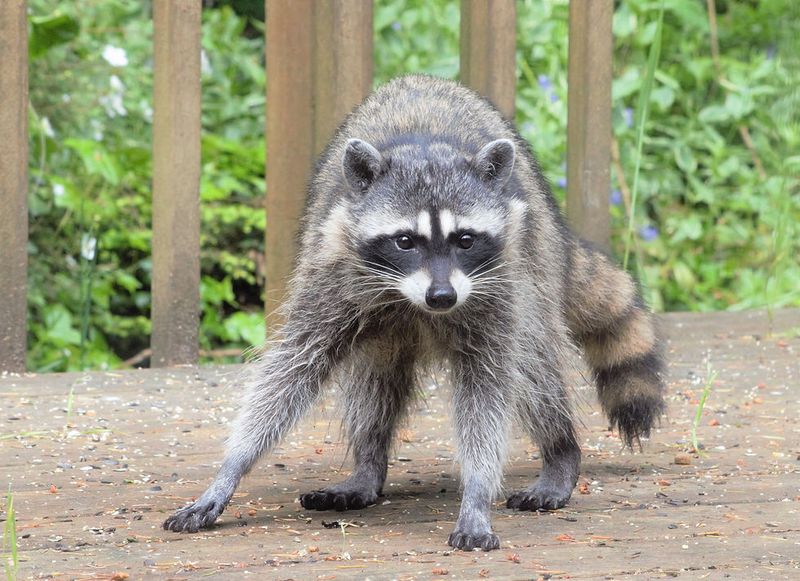
Surprisingly, even domestic dogs can be a threat to raccoons. Often, these encounters occur when raccoons wander into suburban areas, seeking food. Dogs, driven by instinct and curiosity, may chase or corner raccoons. While not typically hunting for sustenance, some dogs can cause harm through their aggressive play or territorial behavior. It’s crucial for pet owners to supervise their dogs and prevent unwanted confrontations. Fun fact: Dogs have a sense of smell that is 10,000 times more sensitive than humans, making them excellent trackers.
Lynxes
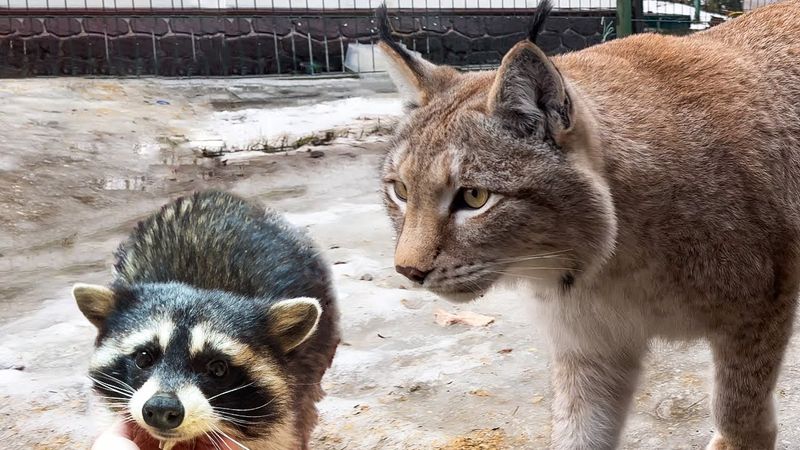
Lynxes, with their tufted ears and stealthy demeanor, are skilled hunters of raccoons. These felines are built for cold climates, with thick fur and large paws that act like snowshoes. Their acute hearing and sharp vision enable them to detect raccoons scurrying in the underbrush. Lynxes often rely on their camouflage to approach silently before pouncing with speed and precision. An intriguing detail: The lynx’s ear tufts are believed to help enhance their hearing, making them adept at locating prey in dense forests.
Fisher Cats
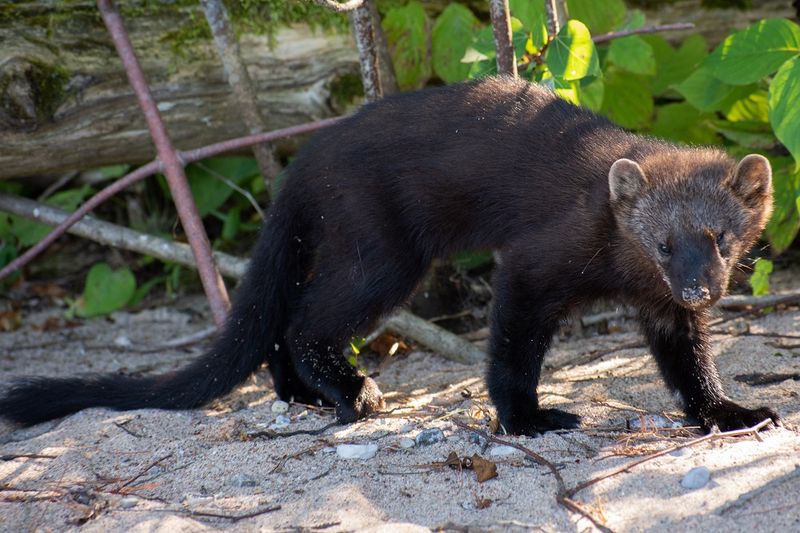
Fisher cats, despite their misleading name, are neither cats nor do they primarily fish. These agile predators are relentless hunters of raccoons, especially favoring the forested regions of North America. With sharp claws and teeth, fisher cats can climb trees to access raccoon dens. Their long, slender bodies allow them to pursue raccoons with ease. Fascinatingly, fisher cats are one of the few predators that can successfully hunt porcupines. Their tenacity and agility make them formidable opponents for many woodland creatures.
Hawk
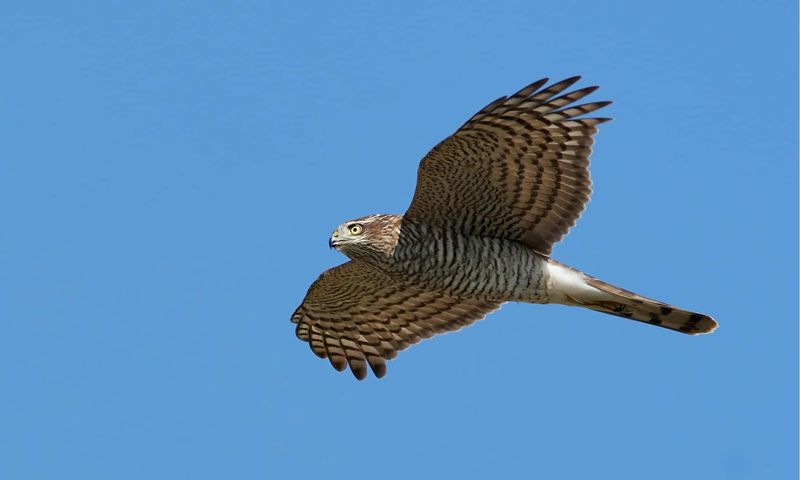
Majestic as they are fierce, hawks glide silently across the sky, scanning the earth for their next meal. Their sharp eyes can spot a raccoon scampering through the underbrush from hundreds of feet away.
With a swift swoop, they dive down with precision, their talons outstretched. Though raccoons are crafty, hawks exploit their momentary lapses of attention.
These aerial predators are not routine threats for raccoons, but when hunger strikes, a hawk will seize the opportunity. Did you know? Hawks can see ultraviolet light, letting them track prey others might miss!
Black Bear
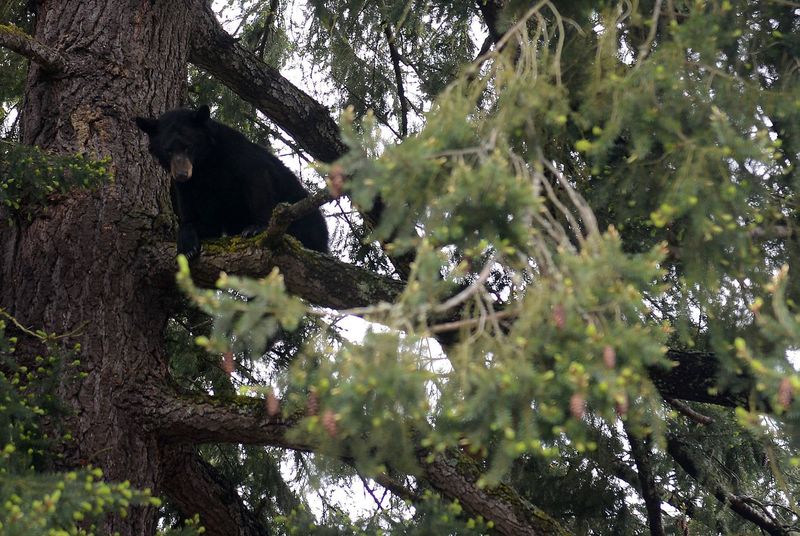
With their lumbering gait and impressive size, black bears might not seem like natural raccoon hunters. Yet, these bears are opportunistic and intelligent, taking advantage of any easy meal.
When food is scarce, a curious raccoon might find itself on a bear’s menu. Black bears can overpower a raccoon with their strength, despite the raccoon’s agility.
Surprisingly, black bears are gentle giants most of the time, preferring berries and nuts. However, in moments of hunger, a raccoon is just another tasty morsel in the bear’s buffet. Did you know? Black bears have a sense of smell seven times stronger than a bloodhound!

